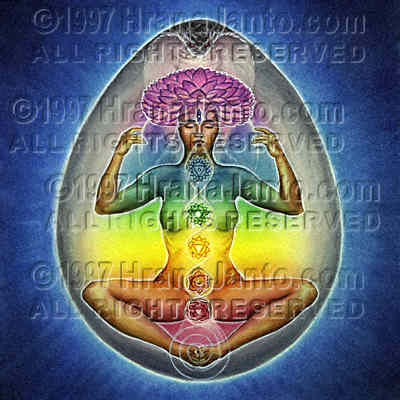 |
|
PREVIOUS | NEXT | A,B,C, D,E, F,G,H,I, J,K,L,M, N,O,P,Q, R,S, T,U,V,W,X,Y,Z | Help | ALL | INDEX
| Shakti from Goddesses and Heroines |
Exerpt from Goddess & Heroines by Patricia
Monaghan [Used by permission. This text is NOT included in the Goddess Oracle] |
Just as divinity is symbolized in Hindu India as a phallus (lingam) surrounded by a vulva (yoni), so goddess energy is thought to surround and animate the energy of a god. Maleness, in divine terms, is thought of as inert, a kind of passive being, while female divinity provides the activating energy that invigorates and empowers the god. Thus, in religious iconography, Hindu artists show the goddess having intercourse on top of the god, activating his previously languid body.
Worship of Devi ("The Goddess") appears to have been the rule in pre-Indo-European India. Generations of invasions by Indo-Europeans with their patriarchal mythology, led to the apparent religious conquest of the area. But the goddess' worshipers did not give up her image; as the Indo-Europeans mingled with the indigenous races, the goddess began to reappear in Indian religious texts. Eventually, in the complexity of Hinduism that exists today, the goddess as the Shakti or energy of divinity was inseparable from the male god.
Each member of the Hindu trinity was provided with his Shakti: Maya enlivening creative Brahma; Lakshmi empowering nurturing Vishnu; and Parvati or Kali as the consort of destructive Shiva. But Shakti is sometimes used as a name for Shiva's energy alone, consistent with the philosophic understanding that all life, all energy, ultimately leads to destruction.
| Back to TOP | Published by Llewellyn, copyright 1997. Used by permission of the author. |
![]()